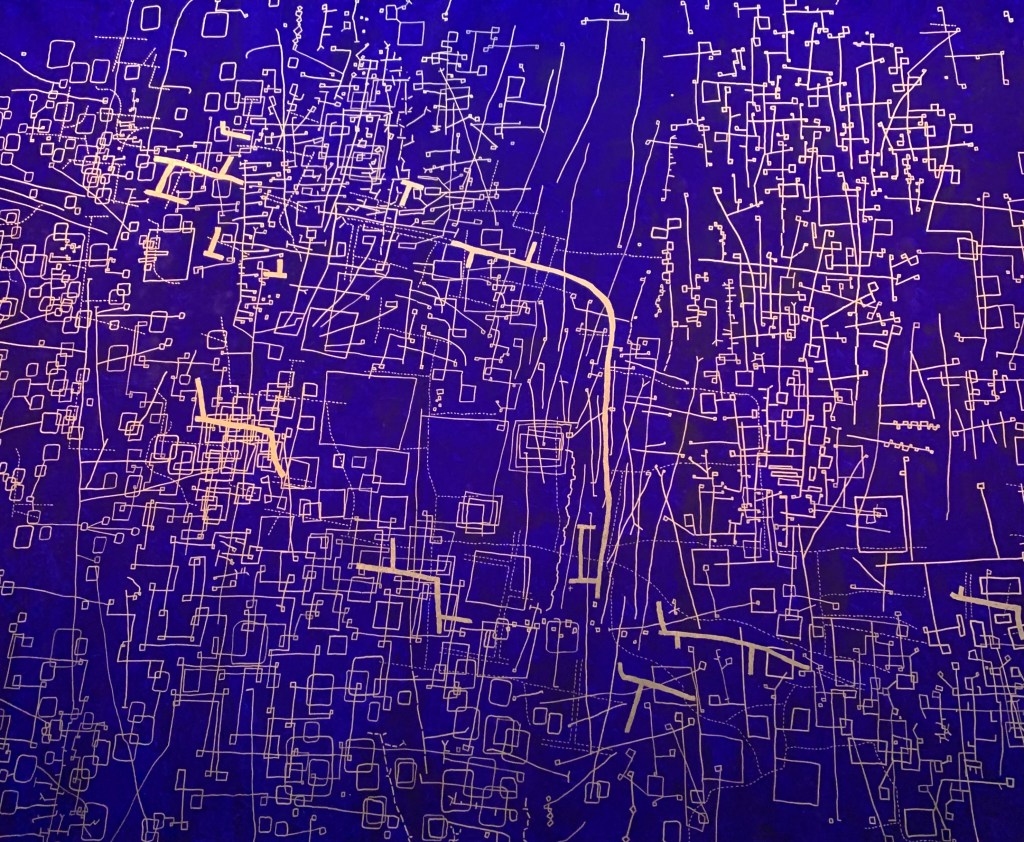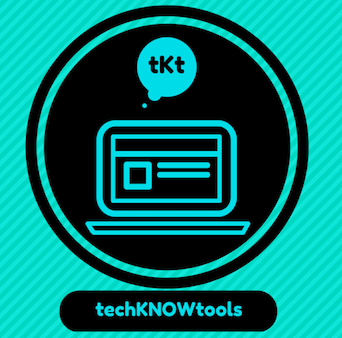It’s the end of January. For many it is the realization that a new years goal, new habit, or personal objective has been met. For many, the start of a new year and new decade might even mean saying goodbye to old things that are taking up space in your life, i.e. clutter. Some of the clutter that is often overlooked are usually at our finger tips and in the cloud — digital clutter.
With more opportunities to create, capture, make, and share with emerging technologies, there are increasingly even more ways accumulate and hoard digital bits. We barely think twice about snapping multiple photos, as it is either on a digital camera and often on our mobile devices (that we have not thought about about in a while). I’ve been thinking about this issue since I left my university role last August. You would not be surprised to learn how much your life can get digital entwined and how much one person accumulates in terms of digital files, folders, projects, etc. in just one decade. Now factor in this digital mass with your personal devices (all of them), cloud-storage, and obsolete technologies you have collecting dust at home. Who knows what lies within our digital archives personally and professionally? [No really. Who knows?] Since I was studying this topic last year in INFO 5841, I thought I’d share my own research and reflection of what to do when downsizing these digital artifacts — or at least taking account and review if you actually need “these digital things” in your life anymore. #DoesItBringYouJoy

It is so easy to continually collect, hoard, and stockpile all things digital these day. There is such portability with how we carry these images, books, information, and content, that we rarely think twice about space or cleaning out these digital closets in our personal lives. Gunn (2018) defines the term personal digital archiving (PDA) as “the collection, management, and preservation of personal and family materials created in digital media,” (p. xi) such as photos, videos, documents, email, websites, and social media content. With our social media existence and how we contribute a large amount of digital content virtually, there is no doubt that our PDA contents could fill a digital abyss. With our tethered technologies, access to networking platforms, and ability to connect with others, there are more digital, social platforms collecting a growing number of written comments, image or photos, and media files (e.g. videos, music, & audio files) scattered among our email inboxes to an outdated device and even amassing real estate in the digital cloud to save it all.
Although organized, stored, and audited my my professional and scholarly life, I will need to confess I have neglected to offer any of my PDA the same attention. As a researcher and learning design consultant, it is critical to showcase and preserve the formal knowledge in academic journals, data repositories, conference presentations, and more via Google Scholar Citations, ORCID, and ResearchGate. Additionally, you can find my invited talks in SlideShare, educational video clips in YouTube, and training audio or podcasts archived on Soundcloud to offer examples of my learning experience design and consulting portfolio. That being said, there has been very little accomplished with regards to formal wrangling of my digital footprint outside of my career. We could all use some “life-changing magic of tidying up” (Kondo, 2014) when it comes to archiving our personal digital lives. The average American seems to thrive in digital clutter with an average of 582 pictures stored on their mobile, 83 websites bookmarked, at least 21 desktop icons, and 13 unused phone apps with almost 645 gigabytes stored on external space and between 1000 to 3000 unread emails (Booth, 2019). These digital hoarding statistics and the European Commission’s (2017) goals to protect personal data with the General Data Protection Regulation (GDPR) laws, it seemed like an appropriate time to deal with PDA aspects of any forgotten online accounts, untouched social media channels, rarely used apps, and even outdated, electronic hardware and/or storage devices. With these factors and the need to consolidate personal digital archives, it was time to figure out how to get rid of this personal digital excess and unorganized mess.
The KonMari method (Kondo, 2014) of tidying up and clearing the clutter asks one question when as you decided to keep or discard an item: “Does it brings you joy?” For the thousands or millions of virtual artifacts in our personal archives, this question might be an exhausting practice as we sift through all we have collected and curated in our digital lives. There are a number of unused accounts that need to be closed, passwords that require updates, and artifacts that need to be preserved into a usable and accessible format (Palfy, 2019). In addition to this, we have to identify the apps, accounts, web services, subscriptions, and emails that need to be purged. With this purge comes sentimental values as we consider the text messages, voicemails, emails, photos, and videos we have been holding onto – along with the accounts, websites, and apps we no longer frequent; however, all are holding space on our devices, in the cloud, and, maybe within our hearts.
Our digital lives are continuing to scale and are ubiquitous with how we live. Beyond a digital clean up, how can we preserve our memories and mementos we are creating and contributing online, in apps, and within virtual spaces? There always seems to be more cloud storage or added space on upgraded devices, that we forget to remove personal digital archives and artifacts that may no longer serve us. Also, these digital platforms and channels allow for communities to grow, experiences and events to happen, and information to be shared across the globe. This means that PDA may also impact and influence cultural institutions, museums, library collections, and other organizations, who often have little guidance for how to guide digital preservation digital collections and/or how to best guide public outreach to offer support for their digital archiving practices among community members (NDIIPP, 2013). This could include government documents, like the recent Mueller report, or even historical events and alternative news coverage, such as the Iran elections and political uprising that surged on Twitter in 2009-2010, as the platform allowed for communication and revolutionary protests. PDA creates an individual mountain that is difficult to climb and a rising concern among community members and our society as we try to find ways to preserve digital artifacts connected to a time, place, and group of people. Specifically, how can we archive events, experiences, news, and knowledge as it is created digitally? Additionally, as platforms, digital file types, and ways to store and access evolve, what are the best methods to archive these personal artifacts? And how can we model and help others curate their personal digital artifacts and archives for digital preservation and future access?
This is a serious endeavor and tremendous feat for most individuals, let alone any community or organization that lives in digital environments. In reviewing a comprehensive guide from the American Library Association on conducting effective a PDA practices (Marshall, 2018), there are a number of suggestions for public and community audiences, academic colleagues, and individual efforts; however, this paper will target the individual level for PDA best practices. Beyond file organization, naming conventions, and storage and back up tips, Marshall (2018) expressed her growing concerns and issues every day users will have for being able to translate, apply, and put into practice archival standards set out by the library profession as it is always evolving and it can be quite complicated. The Library of Congress established outlines a toolkit for suggestions for hosting a Personal Digital Archive Day or Event at a conference or community organization, to help users answer these complicated questions about preserving personal artifacts, such as audio, video, electronic mail, digital records, websites, blogs, social media, and transferring data or files from devices to long-term storage options. Additionally, the Library of Congress has offered continued support for addressing issues and questions for PDA on their blog, The Signal, to guide how to preserve digital memories, strategies from real-world archiving experiences, outlining of potential issues/challenges, and offering a way to connect users to institutions, learning, or outreach to support PDA practices (NDIIPP, 2013). There is no shortage of PDA storage options, data repositories, and ways to preserve your memories; however, the sentimental aspects of identifying what you want to save and deciding what is most important might slow you down as you de-clutter and organize your personal artifacts, make copies, manage PDAs in different storage locations, and make places for an annual review to ensure storage system access and/or updates.
So beyond cleaning out your closets, selling back old books, or shredding your bills or paperwork, maybe it’s time to pay attention to the digital clutter that has been accumulating over the years. How do you account for your digital artifacts? Do you spend some time organizing, reviewing, and discarding these digital items? Tell me about it — I could use some suggestions for my own review.
References
Booth, S. (2019, February 6). [KM5] How digital hoarding may be damaging your mental health. Healthline. Retrieved from https://www.healthline.com/health-news/are-you-a-digital-hoarder
Gunn, C. (2018). Introduction: Putting personal digital archives in context. In B. Marshall (Ed). The complete guide to personal digital archiving, (pp xi-xxii). Chicago, IL: American Library Association.
Kondo, M. (2014). The life-changing magic of tidying up: The Japanese art of decluttering and organizing. New York, NY: Ten Speed Press.
Marshall, B. H. (2018). The complete guide to personal digital archiving. Chicago, IL: American Library Association.
National Digital Information Infrastructure and Preservation Program (NDIIPP). (2013). Perspectives on personal digital archiving. Library of Congress. Retrieved from http://www.digitalpreservation.gov/documents/ebookpdf_march18.pdf
Palfy, S. (2019, January 26). How to “Marie Kondo” your digital life in 2019. The Next Web. Retrieved from https://thenextweb.com/contributors/2019/01/26/how-to-marie-kondo-your-digital-life-in-2019/
